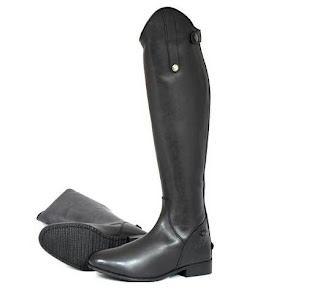Hey guys I'm back and this time I kept my promise. I'm gonna get straight to the point cause I don't have that much time and there a still a LOT of colours I haven't talked about.
Paint:
Paint horses have a coat with two or more colours, one of
them being white and the other being brown, black, red or gold. They have
patches or patterns on their coats. The two main types of paint horses are
tobiano and overo. Overo paint horses are a colour with white splotches, and
tobiano paint horses are white with coloured splotches. I personally like tobainos better but that's just me :)
 |
| Overo and Tobiano Paint Horses, picture from the American Paint Horse Association |
|
Pinto:
A pinto horse is mainly the same as a paint horse, except a
paint horse is a breed (the American Paint Horse), while a pinto horse doesn’t have
to be a particular breed.
 |
| Pinto Horse, picture from http://www.michaelwincott.org/ |
|
Flaxen Chestnut:
A chestnut horse with a flaxen mane and tail.
 |
| Flaxen Chestnut Horse, picture from http://www.morgancolors.com/ |
Liver Chestnut:
Liver chestnuts (also called dark chestnuts) are a browny dark-reddish colour. They have very dark red hair with smaller amounts of lighter red hair (eg. on the legs)
 |
| A Liver Chestnut Horse, picture from http://www.bloomfieldfarm.com.au/ |
Palomino
Palomino horses have a golden or creamy coloured coat with a white mane or tail. (can look similar to flaxen chestnuts, except palominos are lighter and their coat is more of a creamy shade as opposed to the more red shade of chestnuts)
 |
| A Palomino Horse, picture from http://www.typesofhorses.info/ |
Roan
A roan horse has a coat with white hairs mixed in with other colour hairs. The most common type of roans are blue roans (black hairs mixed with white hairs) and red roans (Chestnut hairs mixed with white hairs, they are also called strawberry roans) but there can be other colours mixed with the white as well and it is still considered a roan.
 |
| Red roan, picture from http://www.equine-world.co.uk/ |
 |
| Blue roan, picture from http://www.horseforum.com/ |
Appaloosa
Appaloosas are horses with spots on their coats. There are three types: a blanket appaloosa, a leopard appaloosa and a snowflake appaloosa.
Leopard appaloosas are white with coloured spots all over their body (these can vary in size)
 |
| Leopard Appaloosas, http://horses.mediarift.com/ |
Blanket Appaloosas have a white area around the hip area but it can also go further up the horse's back. There are coloured spots on the blanket which are the same colour as the base colour.
 |
| A blanket appaloosa, picture from http://www.richardbealblog.com/ |
Lastly there are snowflake appaloosas who have small spots are flecks on their body.
 |
| A snowflake appaloosa, picture from http://horses.mediarift.com/ |
Duns and Buckskin
Duns and buckskins are often mixed up but they are two very different colours. They both have a coat that can range from a gold to a tan to a sandy colour, and they both have black points with a black mane and tail (like a bay horse). However, dun horses have distinctive markings that buckskins don't. Buckskins and duns also have different genes (I'm pretty sure buckskins have a cream colour gene while duns don't, but don't quote me on that)
1. The dorsal stripe. A dorsal stripe is a dark stripe that runs up a horse's back, however not all horses with dorsal stripes are duns.
 |
| dorsal stripe, picture from http://en.wikipedia.org/ |
2. Zebra stripes. A dun will have zebra stripes that are most commonly on their legs, but can also be on their withers or behind their ears.
 |
| Zebra stripes on a dun horse's legs, http://uthappytrails.blogspot.com.au/ |
 |
| A dun horse, picture from http://www.crownzquarterhorses.net/ |
 |
| Buckskin horse, picture from http://arkoiscute.deviantart.com/ |
Those are all the well-known colours, but remember, there are many more uncommon colours!
Rachel.






























